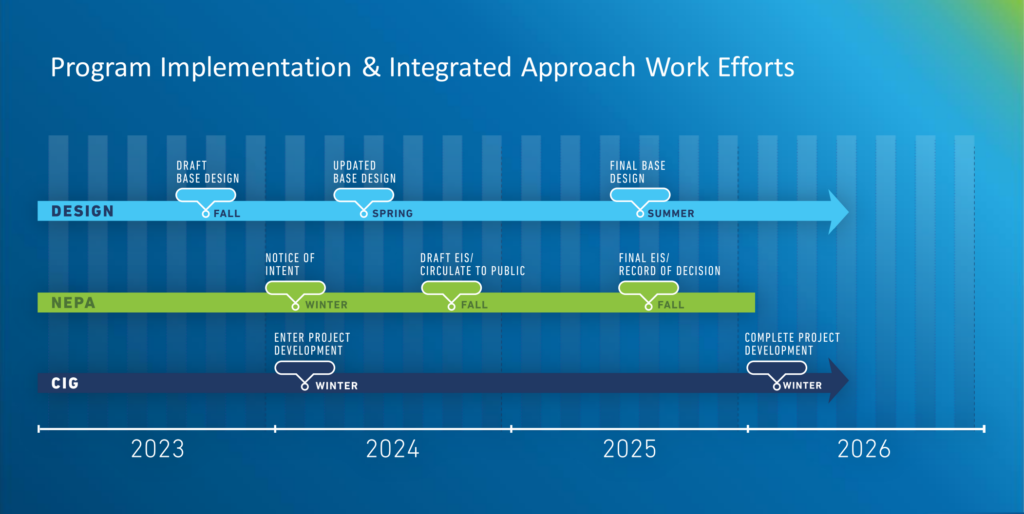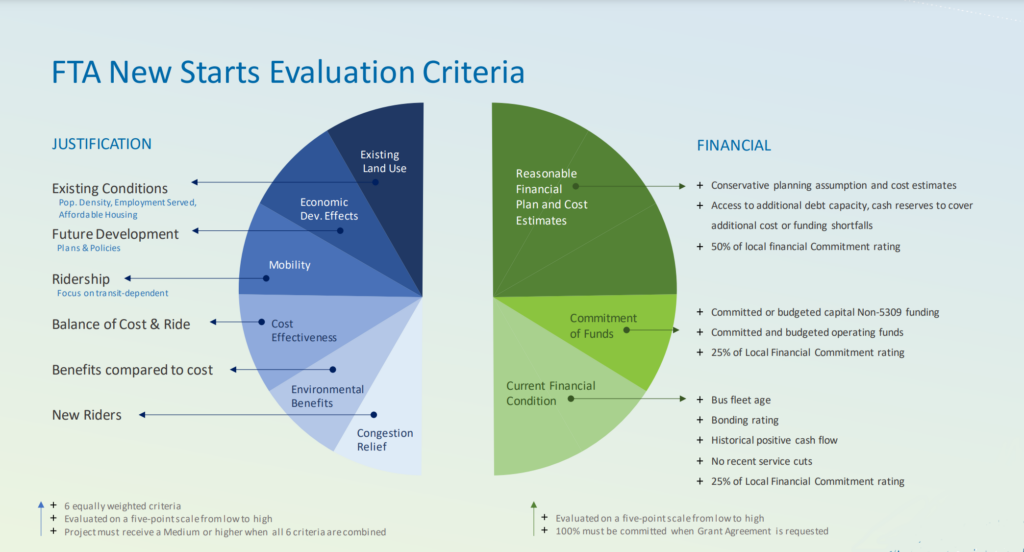Austin Transit Partnership seeks federal grant funding for light rail
Wednesday, September 20, 2023 by
Chad Swiatecki Leaders of the Austin Transit Partnership are expected today to give the OK to petition the federal government for transportation grants needed to cover half the cost of the planned light rail system through downtown Austin. That step, which will come during the ATP Board of Directors meeting, will be the most significant public move on the light rail project since the downtown route was announced this spring.
ATP staffers said they’ve been working quietly in the intervening months to get the agency approved as a potential recipient of Federal Transit Administration dollars, which would come from the competitive Capital Investment Grants program. The agency has also worked on very preliminary design concepts for the various components of the light rail line while also preparing for extensive environmental planning required by the federal government’s National Environmental Policy Act.
Jen Pyne, ATP’s executive vice president of planning and community, said agency staff will spend the next year-plus focused on those three objectives: approval as a grant recipient, applying for FTA money and pushing ahead with environmental work.
“ATP is relatively new for this kind of thing, a couple years old, and so there’s some process associated with affirming our eligibility to receive and use those federal funds,” Pyne told the Austin Monitor. “It’s about is making sure that we’re federally compliant in terms of our procurement policies, our civil rights programs, et cetera. So we’re sharing a lot of that material with FTA towards demonstrating that compliance.”

Credit: ATP
While voters approved the local financial contribution for the rail system in 2020, the system is still in the middle of a development and planning phase that will run till 2026. The next significant steps for ATP include filing an official notice of intent related to NEPA early next year, followed soon after by an updated base design for the system. A draft environmental impact statement will be available to the public next fall, with a final document scheduled for completion in fall 2025.
The FTA grant application process will also begin early next year and is expected to run through early 2026.
Greg Canally, ATP’s executive director, said the agency will continue its community engagement work this fall, looking to the public for feedback on design concepts and more detail about how the system can best meet their needs.
“We are always going to be out there in the community … going to talk to the folks along the alignment, but also stakeholders about their user experience. We now have the plan, but what’s it going to feel like to ride the system? What are the stations going to look like? What are the principles that we want to solve for? The next two or three months we will go actively engage in that Austin community and start hearing feedback about some of these more particulars now that they know where we’re building it.”
On the competitive CIG grant program, Pyne said ATP has talked extensively with transit planners in major cities such as Seattle, San Diego and Dallas to learn about their experiences seeking federal funding. With New York City as the only other major transit system seeking FTA money, ATP leaders are hopeful the federal contribution will reach the expected 50 percent of the total project cost.
“(CIG) is the gold standard for these kinds of capital, high-capacity transit programs. It’s a lot of work and you have to work through some federal process, but at the end of the day it’s a grant that reimburses our costs and it’s not paid back. … It’s hard to get that level of federal participation from other grant programs,” she said. “We’ve also engaged a lot with industry that would be probably bidding for the contracts that we will have eventually, and learned a lot there about lessons learned, best practices in implementing projects across the country.”
The recent unveiling of the light rail route included messaging from ATP that it would look for ways to further extend the northern and eastern lines, especially to reach Austin-Bergstrom International Airport. Canally said the current endpoints at 38th Street and Yellow Jacket Lane will be the focus of the CIG application process, while pursuing other funding for the potential extensions.
“We’re going to move that through NEPA and through the CIG process and make sure that we are all on hand to get that done. We will be ready, especially from an engineering perspective, if in case some funding is identified, to do that in advance of us drawing down those federal funds,” he said.
Pyne said FTA’s Transportation Infrastructure Finance and Innovation Act (TIFIA) program that provides credit assistance for qualified projects is one possible source of additional funding that ATP will consider.
On the environmental front, Deron Lozano, ATP’s senior vice president for environment and project development, said NEPA requires detailed data on land use, population, employment impacts and many other factors in proximity to the system. Currently, Lozano and his team are working to determine what permits, planning and other documents will be needed, including a Mitigation Monitoring Plan that tries to account for as many uncertainties as possible. One example Lozano offered was a recent Arizona transit system route where an unknown historical site was discovered.

Credit: ATP
“We’re looking at what are potential permits that we’ll need to secure, and what are those permits that are needed for the unknown? So that’s something that we’re working through kind of hand in hand with the city as partners to help alleviate some of those unknowns as they potentially come up,” he said. “The Mitigation Monitoring Plan defines all those actions and items that you have to go through to make sure you meet local and federal requirements. We’ll also be working through local guidance and local regulations. The tree ordinance in Austin is certainly different than tree ordinances in other parts of the country. So the NEPA document will assess and evaluate any type of tree impacts based on the local requirements.”
Canally said the agency’s close relationship with the city – including having needed city staff working inside ATP offices – is expected to streamline the process for needed work on utilities and other city infrastructure.
“Ultimately, we’re building trains in the cities right away and that utility work associated with things like trees, bike lanes and other work has us highly engaged,” he said. “The city has a dedicated team of folks working embedded with us here in the office, which is really a best practice, and we’ve already had questions from around the country saying, ‘How do you guys get that done already?’”
“We know doing all this thoughtful planning work now will make construction not easier, but at least thought out and planned out.”
The Austin Monitor’s work is made possible by donations from the community. Though our reporting covers donors from time to time, we are careful to keep business and editorial efforts separate while maintaining transparency. A complete list of donors is available here, and our code of ethics is explained here.
You're a community leader
And we’re honored you look to us for serious, in-depth news. You know a strong community needs local and dedicated watchdog reporting. We’re here for you and that won’t change. Now will you take the powerful next step and support our nonprofit news organization?





